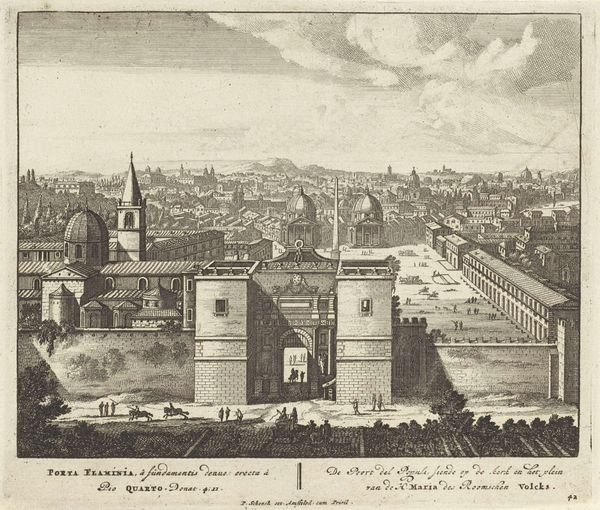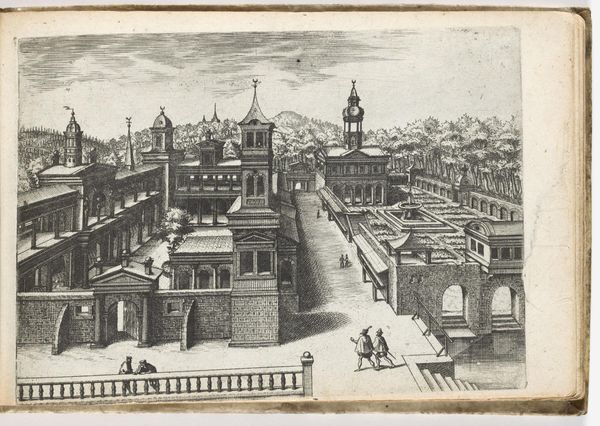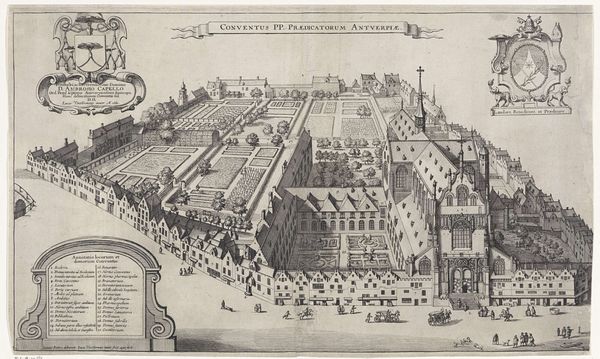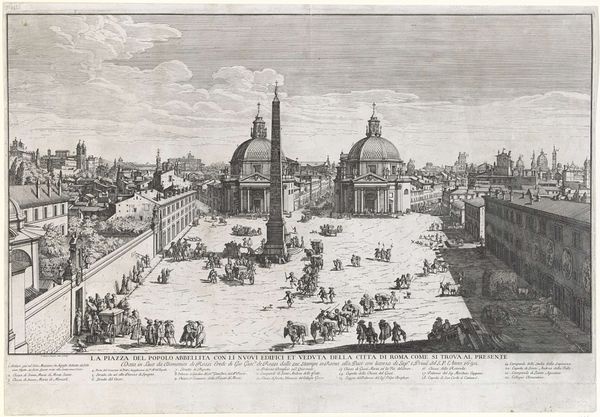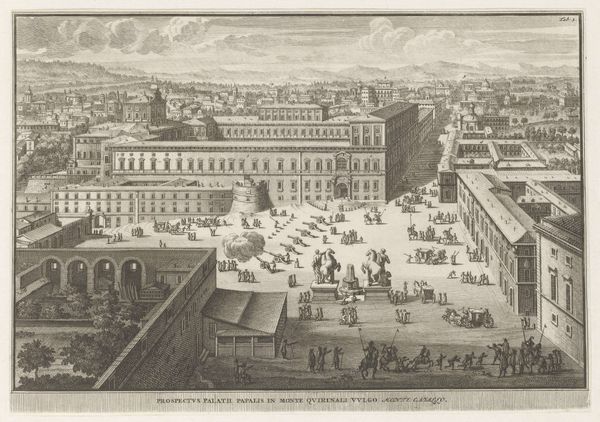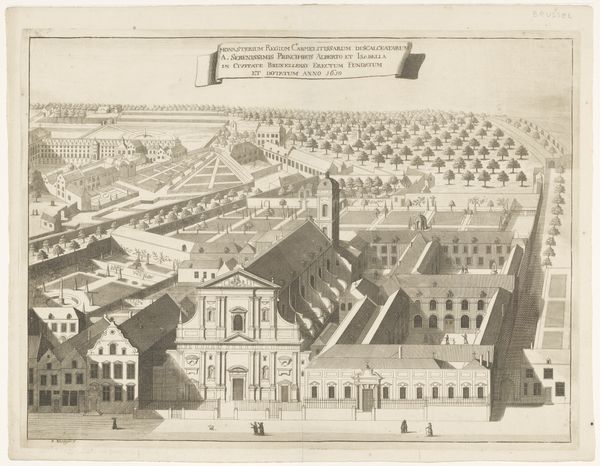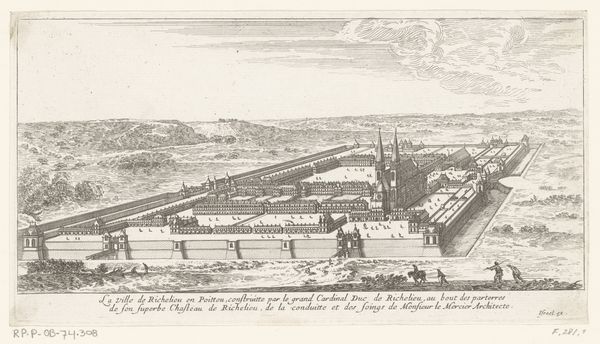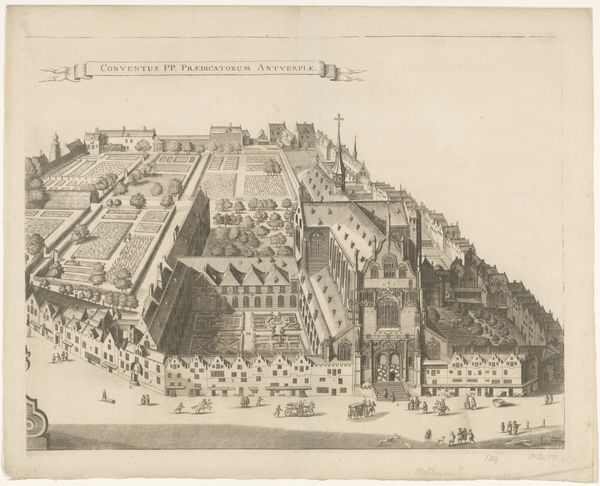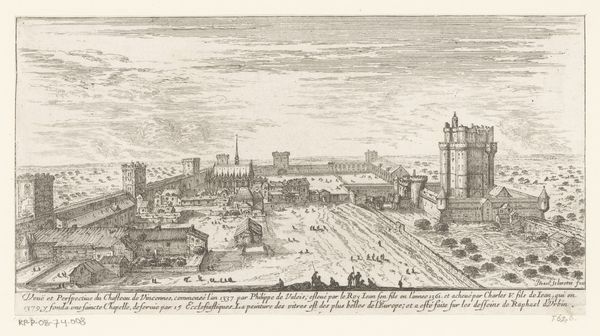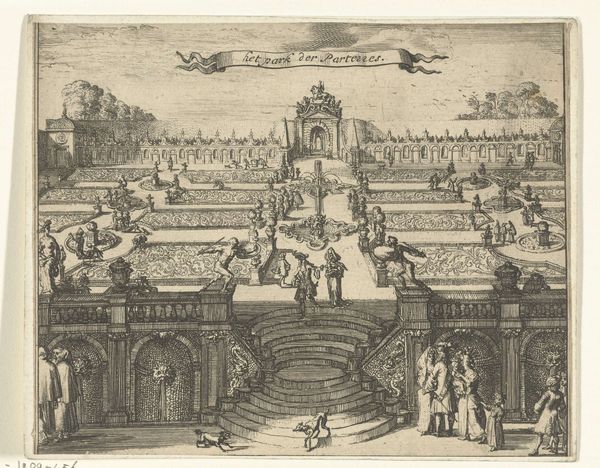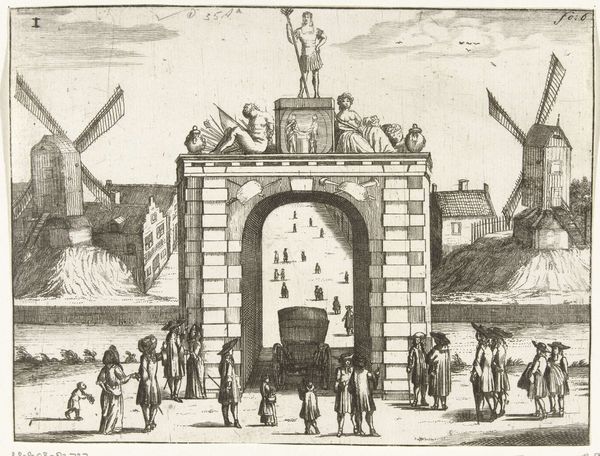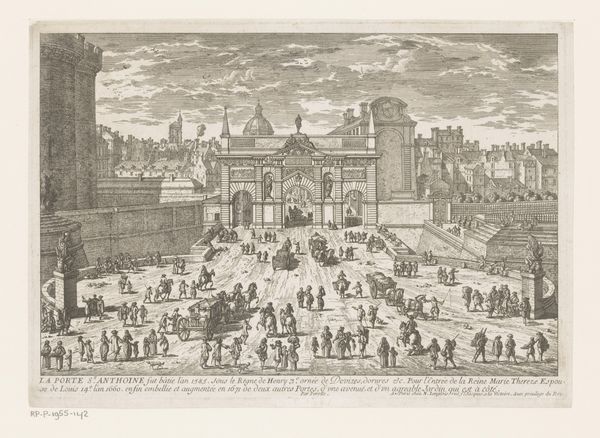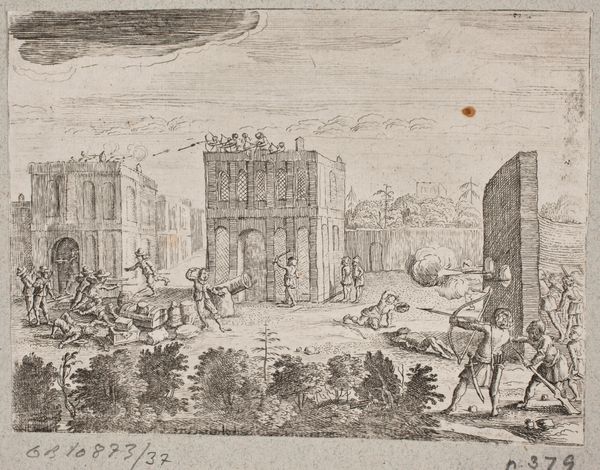
print, engraving
#
baroque
# print
#
old engraving style
#
cityscape
#
history-painting
#
italian-renaissance
#
engraving
Dimensions: height 227 mm, width 329 mm
Copyright: Rijks Museum: Open Domain
Curator: This print, "Piazza del Popolo te Rome," created in 1729 by Jacobus Baptist, offers us a bird's-eye view of the bustling Roman square. It's currently housed in the Rijksmuseum. What are your initial thoughts on this particular cityscape? Editor: Immediately, I’m struck by how ordered and almost regimented it feels. The city sprawls in the background, but the stark lines of the architecture in the foreground and the meticulous details make it read as a powerful statement of civic control, don't you think? Curator: Precisely. That architectural severity serves a distinct purpose. It establishes the gateway as a symbolic entrance to Rome, an archetype reflecting power and order. Notice how Baptist highlights the Porta del Popolo. This gate isn't just an opening in a wall, but a carefully crafted stage for ceremonies and welcomes, reinforcing Rome’s enduring legacy as a center of power and pilgrimage. Editor: You’re right, there is almost a stage-like quality to it. Looking at the tiny figures populating the square, it makes you wonder about the lived reality, the commerce and daily life happening under the gaze of these grand structures. I also see an almost uncanny stillness throughout the composition—is it purely stylistic? Curator: While Baroque art frequently prioritizes drama and exuberance, in Baptist’s image there is almost a clinical level of detail here that communicates a sense of self-conscious order. That clarity underscores the values and order the gate aimed to embody. Also note the history painting elements – those horse-drawn carriages indicate constant motion and references to conquest and movement that signal the ongoing strength of Rome. Editor: It’s compelling to see the tension between this drive for stability and the constant state of flux inherent in urban life – Baroque values set against a modern sensibility. Looking closer, it’s fascinating how prints like this disseminated a specific image of Rome. They became cultural currency, shaping how people envisioned and understood the city, long before photography became common. Curator: Yes, in essence, the image functions as a symbolic gate in itself – letting those abroad walk imaginatively into Rome to grasp its symbolic identity, and also reminds people of this grand cultural site. Editor: It is striking how a simple engraving can encode so much about Rome's self-image and its influence on the wider world. Curator: Indeed. The work offers a glimpse into both a specific time and place, but more universally illustrates power dynamics of city planning.
Comments
No comments
Be the first to comment and join the conversation on the ultimate creative platform.
